|
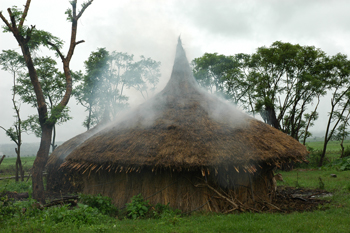 Across much of Ethiopia today, the grass and crop fields are green, the oxen and chickens fat and sleek, and the goats and cows roaming outside the traditional round mud huts, called ‘tukuls’, where smoke rises from cooking fires inside, healthy. Across much of Ethiopia today, the grass and crop fields are green, the oxen and chickens fat and sleek, and the goats and cows roaming outside the traditional round mud huts, called ‘tukuls’, where smoke rises from cooking fires inside, healthy.
 The first of the year’s crop harvests are just now coming in—too late to save the most vulnerable. Livelihoods have been seriously effected in parts of Ethiopia’s Afar, Amhara, Oromiya, SNNP (Southern Nations, Nationalities and Peoples), Somali and Tigray regions with the failure of seasonal crops, large losses of livestock and skyrocketing market prices. The first of the year’s crop harvests are just now coming in—too late to save the most vulnerable. Livelihoods have been seriously effected in parts of Ethiopia’s Afar, Amhara, Oromiya, SNNP (Southern Nations, Nationalities and Peoples), Somali and Tigray regions with the failure of seasonal crops, large losses of livestock and skyrocketing market prices.
The situation is beginning to improve in some areas where rainfall has been received. However, the full recovery of lost assets and future agricultural productivity will require sustained support from government and humanitarian partners in the areas of seed support, supply of veterinary drugs and training of veterinary staff. The rate of livestock sickness in Somali Region has reached critical levels in pastoral communities. NGOs in the region are carrying out small-scale slaughter destocking exercises to improve access to water and pasture for core breeding stock.
Ethiopia’s State Minister for Agriculture and Rural Development, Dr Abera Deresa, says drought emergencies like this one, which the Ethiopian Government and United Nations agencies agree are affecting pockets of Ethiopia’s most vulnerable peoples and marginal farming areas, are a common, recurrent phenomenon in Ethiopia.
‘What is being under-reported’, says the minister, ‘is that Ethiopia’s farm production has recently been increasing by a healthy 10% every year. Unfortunately, this doesn’t necessarily mean that demand and supply are compatible. Thus we have the current food crisis in Ethiopia, which is caused (as in the rest of the world) by climate change (drought), the international shift of food crops to biofuel, and incompatibility of demand and supply.’
The Ethiopian government has been working closely with humanitarian organizations to mobilize timely humanitarian support for the worst-affected regions and peoples. In this work, Abera said, Ethiopia relied on an Early Warning System set up within the Ministry of Agriculture and Rural Development.
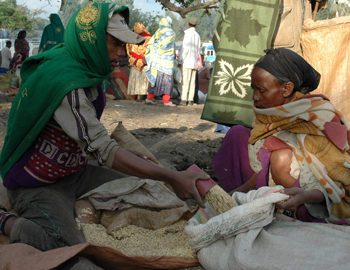 Hunger is hitting other countries here in the Horn of Africa, which are reeling from the triple blows of drought and soaring food and fuel prices. The United Nations estimates that more than 14 million people urgently need food aid, including 2.6 million in Somalia, more than 1 million in Kenya, and 6.4 million in Ethiopia (the latter up from 4.6 million estimated earlier). Hunger is hitting other countries here in the Horn of Africa, which are reeling from the triple blows of drought and soaring food and fuel prices. The United Nations estimates that more than 14 million people urgently need food aid, including 2.6 million in Somalia, more than 1 million in Kenya, and 6.4 million in Ethiopia (the latter up from 4.6 million estimated earlier).
Aid programs are responding to this and other crises. The United States, for example, will this year give Ethiopia more than US$800 million—$460 million for food, $350 million for HIV/AIDS treatment, and just $7 million for agricultural development. No one wants a repeat of the great Ethiopian famine of 1984/5, which killed a million people.
‘We need to help countries like Ethiopia to create and sustain livelihoods as well as to save lives, says Carlos Seré, director general of the International Livestock Research Institute (ILRI), which has a principal campus in Ethiopia’s capital, Addis Ababa. ‘That requires something longer term than food aid. It requires helping the country build skills, infrastructure and policy instruments that support equitable development of smallholder agriculture, the backbone of the Ethiopia’s economy. Pastoralists and small-scale farmers should to be able to feed their families while building assets for the future.’
The Ethiopian Government agrees. Realizing that humanitarian support is not a long-term solution to the country’s food security problems, it is working to help its farmers improve and sustain their food production by, for example, improved ways of managing the country’s heavy clay Vertisol soils and controlling invasive weeds and termites in crop fields. The Government is also supporting market-oriented development of smallholder farmers at all levels, in recent years training some 60,000 extension workers who work directly with farmers.
‘The Government works closely with a wide variety of partners,’ says the minister. ‘One good example is the IPMS Project.’
Improving productivity and market success
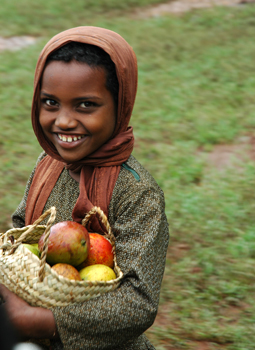
Seré and Abera agree that development work should be homegrown wherever possible. That’s why in 2005 ILRI teamed up with the Ethiopian Ministry of Agriculture and Rural Development and the Ethiopian Agricultural Research System and other centres of the Consultative Group on International Agricultural Research (CGIAR) to implement an action-oriented research project to “Improving the Productivity and Market Success” (IPMS) of Ethiopian Farmers. This 5-year project, funded by the Canadian International Development Agency (CIDA), works on market-led agricultural development in ten pilot learning districts as well as at regional and federal levels.
(http://www.ipms-ethiopia.org/)
This initiative works to help smallholder farmers transform their subsistence-based farming
practices into market-oriented agricultural systems. The IPMS project works with farmers, cooperatives, private-sector market agents, credit agencies and public-sector service providers to develop such a new system through a process of testing and learning.
Knowledge management, innovation capacity development and participatory commodity development approaches are cornerstones of the strategy. Both crop and livestock commodities are considered in the project’s 10 pilot learning districts,
The rising price of food
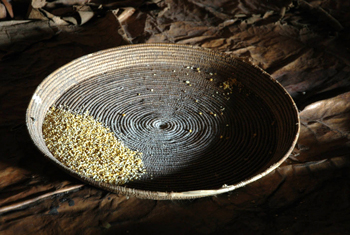 While the food price index of the United Nations Food and Agriculture Organization, which captures trends in major food commodities, rose by 56 per cent between March 2007 and March 2008, it increased only 39% in Ethiopia, 20% in Burundi and Kenya, and just 11% in Tanzania. In several other countries in the region, including Madagascar, Malawi, Rwanda, Uganda and Zambia, the increase was less than 10%. Experts consider that this is because of the varied “food baskets” in the region, with teff being a staple in Ethiopia, local maize in Kenya, plantain in Uganda and beans in Rwanda. Even so, the UN World Food Programme estimates that in some places in Ethiopia, the price of maize increased 83 per cent, sorghum 89 per cent and wheat 54 per cent between September 2007 and February 2008. While the food price index of the United Nations Food and Agriculture Organization, which captures trends in major food commodities, rose by 56 per cent between March 2007 and March 2008, it increased only 39% in Ethiopia, 20% in Burundi and Kenya, and just 11% in Tanzania. In several other countries in the region, including Madagascar, Malawi, Rwanda, Uganda and Zambia, the increase was less than 10%. Experts consider that this is because of the varied “food baskets” in the region, with teff being a staple in Ethiopia, local maize in Kenya, plantain in Uganda and beans in Rwanda. Even so, the UN World Food Programme estimates that in some places in Ethiopia, the price of maize increased 83 per cent, sorghum 89 per cent and wheat 54 per cent between September 2007 and February 2008.
Livestock owners these days are getting higher prices for their livestock commodities. That would appear to be a good thing for the poor, because the higher prices for livestock commodities should be benefiting households that are net sellers rather than buyers of food. But contrary to conventional wisdom, most poor households in this region, including those in rural areas, are net buyers rather than net sellers of food, and thus are, at least initially, hurt rather than helped by rising livestock and other food price rises.
Can poor farmers benefit from rising prices?
In many circumstances, higher livestock prices should, over the longer term, help more than hurt poor livestock producers, and that is why ILRI is encouraging subsistence farmers in Ethiopia and its neighbouring countries to take a more market-oriented approach to their production systems.
Even so, ILRI and its Ethiopian partners are well aware that not all small farmers will benefit from the rising prices of livestock commodities, that not all small farmers will enter the market economy—or should try, and that provision in policies should be made for those farmers who for various reasons will continue their subsistence production methods and those who will drop out of farming altogether.
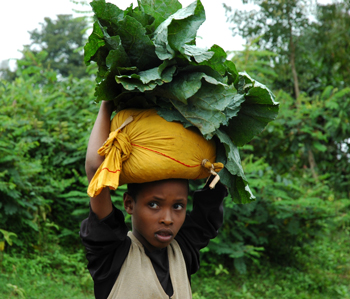 The IPMS project is testing different ways of providing market information on the price and quality of livestock products, introducing small-scale processing of dairy and other livestock products, and new ways to link livestock producers and sellers. Use is made of a credit innovation fund to encourage existing credit institutions to develop new financial products, such as lending/repayment procedures that include collateral requirements to support the introduction of these interventions. ILRI and other research institutions supply the project with knowledge, help it build indigenous capacity in agricultural development, and provide technical advice and documentation of lessons learned. The livelihoods of many of Ethiopia’s small farmers have already been greatly enhanced by their adopting the practice of short-term fattening of large and small ruminants. The IPMS project is testing different ways of providing market information on the price and quality of livestock products, introducing small-scale processing of dairy and other livestock products, and new ways to link livestock producers and sellers. Use is made of a credit innovation fund to encourage existing credit institutions to develop new financial products, such as lending/repayment procedures that include collateral requirements to support the introduction of these interventions. ILRI and other research institutions supply the project with knowledge, help it build indigenous capacity in agricultural development, and provide technical advice and documentation of lessons learned. The livelihoods of many of Ethiopia’s small farmers have already been greatly enhanced by their adopting the practice of short-term fattening of large and small ruminants.
Earlier this year, Ethiopia’s Prime Minister H.E. Meles Zenawi presented the IPMS project with a Development Hero Certificate from the government of the Regional State of Tigray.
| The livestock development efforts of IPMS focus on sales of meat or live animals and milk and other dairy products.
The project tests market-oriented production interventions:
• improved housing for farm animals
• (supplementary) feeding systems
• Improved use of crop residues
• planted forage species
• community-based grazing and control of ‘sleeping sickness’ (trypanosomosis)
• community-based breeding and insurance schemes for short-term fattening
• input supply/service interventions
• private bull stations
• decentralized artificial insemination service
• use of synchronization to improve the efficiency of artificial insemination
• private-sector involvement in feed and forage seed supply
• development of a ‘paravet’ animal health system
|
Related Information:
Cattle have been getting some bad press lately. Western editorials report the consumption of
too much fatty red meat leading to increased heart disease, the inefficient use of grain as feed
for livestock and the production of methane gases by cattle, a factor in global warming.
Elsewhere in the world, cattle receive songs of praise.

|

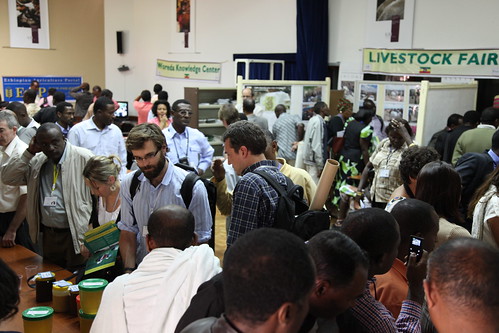
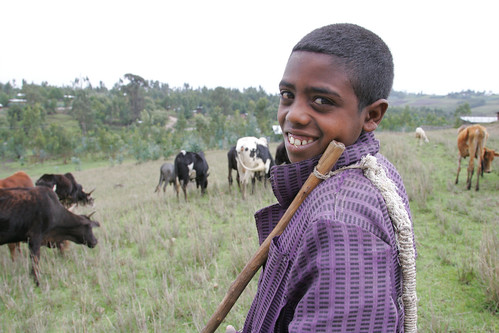


.jpg)







